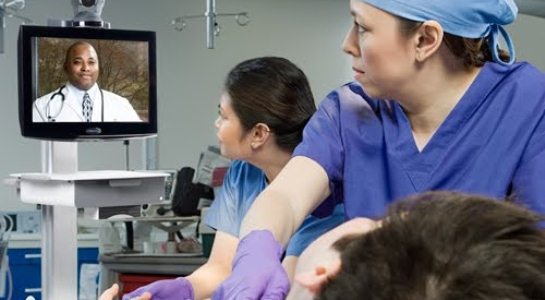Do you like to work at home? It probably gives you the flexibility of being able to take care of things at home while also doing work at the same time. How about visiting the doctor while at home? That’s right! This technology is finally reaching the medical industry in a ground breaking way. Interactive video can now help patients get access to medical specialists without travelling to the hospital.
To be defined more formally, it is called telemedicine and can also include a variety of communication methods including: email, smart phones, wireless tools and other forms of telecommunications technology.
This technology can be used to deliver a variety of services not limited to only medical specialist consultations. They can also include: remote patient monitoring, consumer medical and health information, medical education, and many more.
Rural individuals may benefit heavily from this as their commute to a hospital can be upwards of 100 miles round trip. Sisters of Mercy Health System, which has 42 acute care and specialty hospitals, is breaking ground this week on a $50 million virtual-care center. When it opens next year it will have 75 telemedicine programs and employ over 300 medical professionals.
There are a variety of applications of telemedicine and many have not even been realized yet. Remote “eICU” stations allow intensive-care professionals to oversee multiple intensive-care units utilizing two way video and audio systems. Remote specialists also view X-rays, MRIs and digital photos of skin in order to make an accurate diagnosis. Some are can even view live streaming video from an endoscope or inner ear scope.
The benefits of telemedicine are fairly clear. It allows patients in distant locations to receive world class healthcare. We have seen shortages in both rural and urban areas. This allows healthcare facilities to extend their reach. This can also reduce the cost of healthcare and allows improved efficiencies through better management of chronic disease and reduced travel times.
A pediatrician at Mercy Health uses video to monitor children playing with toys and looks to identify traits such as aggression or observe for tics or tremors. The pediatrician has told families that they can make the drive to see him if they felt the need to. In the two years since the program has been instituted, not a single one decided that was necessary.

